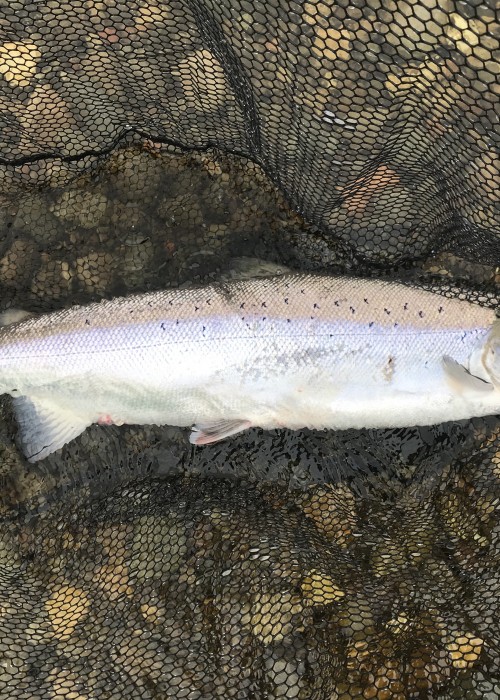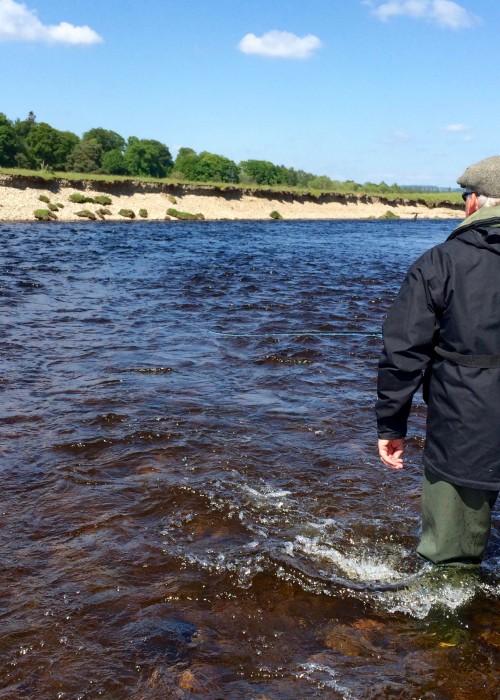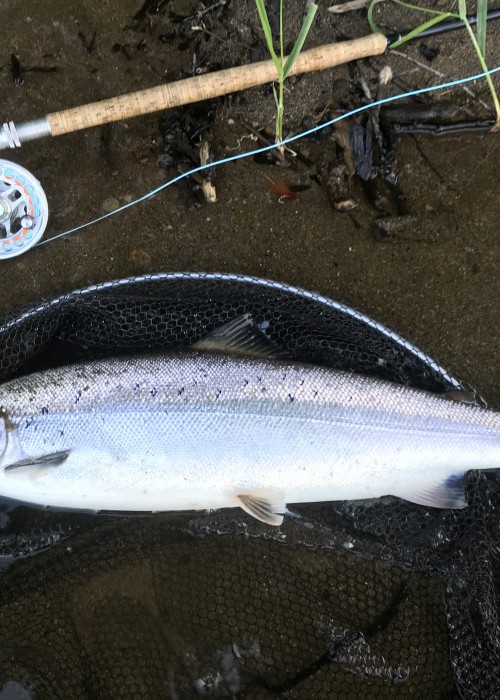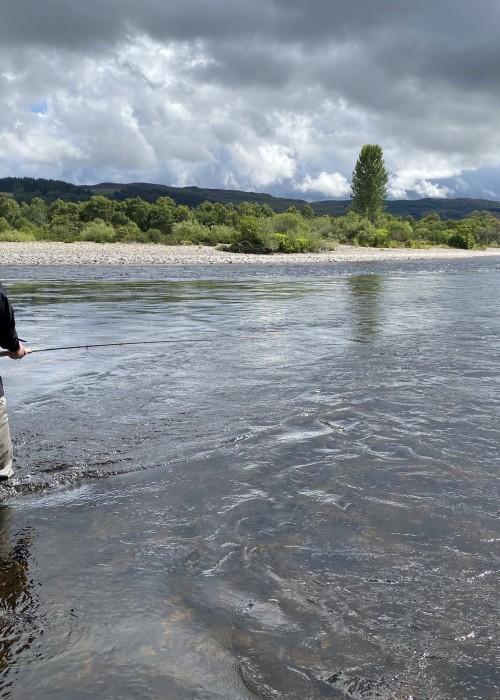




Professional career salmon fishing expert advice on how to force a salmon to take your fly when they are playing hard to catch.
Don't be a delusional salmon fisher and think that just because you're delivering a nice line and spacing each swing of the fly correctly without success that there's no fish present. Stubborn resident salmon need a degree of 'winding up' to be caught so here's my take on that fact. Whether you're a new or experienced salmon fisher hiring a professional salmon fishing guide in Scotland who is top of their game will always bring a better chance of success and add a few extra tactical dimensions to your salmon fishing approach.
Imagine for one minute that you're a salmon lying up on the cooler riverbed of a deep holding pool during the warm water Summer months. All you're seeing is a systematic 'red arrows' display of flies swinging over your head day after day at various times of the morning, afternoon & evening. How easy would it be for you to completely 'switch off' especially after the excitement of the last spate died away weeks ago as did the buzz of fresh water in your nostrils from coming home from the sea several weeks before that. It's no wonder salmon lose all interest in a fly from time to time if you really think about it.
When salmon are present in a pool and not cooperating the first thing you must do is to bin the excuse of blaming the weather and water conditions. Most angler's heads go down far too easily and if our species was faced with the same perils that Atlantic salmon are faced with throughout their oceanic & river lives we'd have been extinct years ago! The salmon pool approach mentality you must adopt when fish are not cooperating has to be 100% sub surface and focussed around what tactical adjustments can you make to the swim depth of your fly to get it right into that square foot of water right in front of a salmon's nose. This requires carrying a selection of 'deep diving' tungsten impregnated sinking tips ranging from type 3 (ips) to type 18 (ips) in lengths of between 10ft - 15ft to assist your water column fly swim flight path in line with the suspected depth of the pool you're fishing and where you believe salmon are holding in the water column.
Juvenile salmon parr are territorial and adult fish develop the same 'memory recall' mindset when back in fresh water. If an annoying foreign object that's simulating a live creature comes too close to even the most unresponsive salmon you're then giving that fish two choices. The first choice is to get away from the fly by moving off its lie or the second more likely option is for the fish to attack it! For you to corner a fish like that to force a decision you really need to know your salmon pool and exactly what sink tip configuration is required to place your fly right onto the nose of resident fish without snagging up too often on the riverbed.
Most anglers are completely unaware of the depth of their salmon fly and often make wrong assumptions that the fly is swimming much deeper than it really is because the sink tip packaging says 'type 6' or 'type 10' (inch per second). That entire badging system that line manufacturer's use gives the wrong impression to anglers and pertains to a 1 inch section of sink tip material being dropped in a glass of still water which obviously has zero 'jacking up' ability like the full sink tip version would have in a flowing salmon pool. If you're targeting the presentation of your fly down deep through the pool and you're not feeling the occasional tap of the riverbed then make the assumption that your fly isn't fishing deep enough and try a denser or longer sink tip with an even bigger upstream mend on delivery to give your line a better chance to sink. Occasionally tweaking the riverbed is indeed annoying but if you've got your depth perception just right the next tweak on your fly could easily not be the riverbed!
If you've fished hard but still blanked come the end of the fishing day be honest with your own assessment of the quality of your fishing effort. If you've worked out exactly where salmon are holding whether high, mid or deep in the water column and swum your fly through these zones consistently then you'll still feel a sense of satisfaction after leaving the river. If however there's a blank thought that comes to mind at the end of the day as to where you were targeting your fly in the water column then you need to start thinking deeper about this often unspoken yet essential side of our game. Too many anglers fish a pool with zero consideration or knowledge as to exactly where their fly is performing so naturally it's always going to be a big hit or a miss as to whether or not a salmon will take their fly. Get your salmon annoyance levels up via 'sub surface' water column planning and feel the difference!